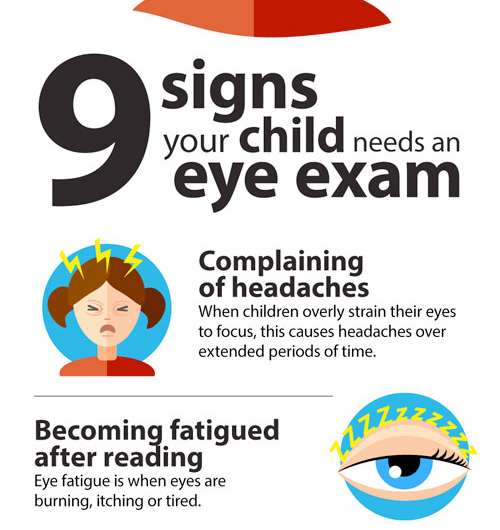Credit: University of Alabama at Birmingham
Back-to-school shopping lists might include school supplies, new clothes, and even a haircut, but does it include an eye exam? Physicians in the University of Alabama at Birmingham Department of Ophthalmology think it should.
"More often than not, vision problems go unnoticed until children begin school," said Associate Professor of Ophthalmology Marcela Frazier, O.D.. "Children grow up naturally adapting to vision issues, so when they get into school and start reading and learning, that is when parents and teachers begin to notice certain problems."
Comprehensive eye exams can detect a variety of eye conditions that, left untreated in a child, could result in partial or complete loss of vision later in life. Common conditions include astigmatism and nearsightedness. Conditions such as amblyopia or convergence insufficiency can cause serious problems if not addressed early in life.
"A screening at a pediatrician's office is a great way to get referred for a vision or eye problem suspected in a child, but even a screening can miss eye problems that would be found during a full dilated eye exam," said Sarah Lee, O.D., assistant professor in the UAB Department of Ophthalmology. "Children can be seen as early as six months, or even earlier if a problem is suspected. If there is a family history of any eye conditions, such as strabismus (eye turn), amblyopia (lazy eye) or refractive error (needing glasses), a full eye exam is recommended to ensure the child's vision and ocular health are normal."
It is important to remember that even a small change in vision can cause eye strain and affect a child's performance in school.
"Vision isn't the first culprit parents think of when their child is struggling in school," Frazier said, "but it can be playing a part in their child's poor school or sports performance."
Here are nine signs children may need an eye exam:
- Complaining of headaches: When children overly strain their eyes to focus, this causes headaches over extended periods of time.
- Becoming fatigued after reading: Eye fatigue is when eyes are burning, itching, or tired. It might be difficult to notice these symptoms in a child, but if a child is falling behind in reading comprehension or shies away from reading activities, this might be the culprit.
- Poor sports performance: If a child's visual processing seems slower than it should, this might be a sign there is a vision issue at play. A child with an untreated vision problem might perform poorly in sports due to clumsiness, poor hand-eye coordination, inability to focus or skewed depth perception.
- Squinting or closing one eye: Squinting does not damage eyes, but it might be a sign that a child needs glasses. By squinting, a child is subconsciously attempting to make the pupil smaller, therefore letting in less light. This technique enhances a child's focus that might be potentially blurry.
- Blinking or rubbing eyes: If a child rubs his/her eyes while trying to concentrate on an activity, particularly reading, or while being active, it could mean the child has a vision problem.
- Poor reading ability and comprehension: Good vision is essential for students of all ages to reach their full academic potential. If a child seems disinterested in reading, is sidetracked easily, does not understand material read, or reads the same sentence multiple times, it might be time to schedule an eye exam.
- Poor school performance: It is important for parents to remember that children do not have a concept of poor vision, so they might not always tell you when they cannot read something their teacher writes on the blackboard. As a result, his/her grades can suffer.
- Holding electronic devices or books too close to eyes: It is a myth that sitting too close to electronic devices can hurt your eyes, but if a child is sitting too close to the TV or holding a book too close to his/her face, it might be a sign of a vision problem. Leaning closely in to read text or see images on the television might often mean a child is living with nearsightedness.
- Loss of place while reading: Using a finger to track the words can be typical behavior for a child who is learning to read, but pay attention to this behavior. He or she should eventually be able to focus on the words without losing place.
Provided by University of Alabama at Birmingham




















